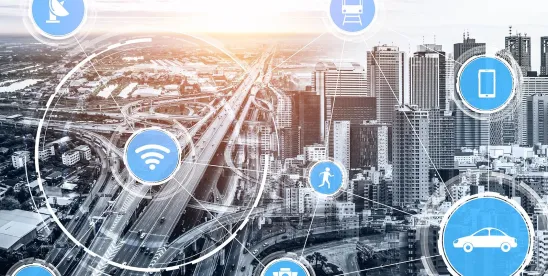Key Developments
- U.S. tariffs on steel and aluminum imports now apply to an estimated $328 billion worth of goods, up from $191 billion following the Commerce Department’s addition of 407 products that will be considered steel or aluminum derivative goods and subject to the 50% levies. The expanded derivatives list includes a number of goods that may impact the cost of certain auto components, according to analysis from Automotive News.
- Canadian Prime Minister Mark Carney announced plans to remove certain retaliatory tariffs on U.S. products that comply with the USMCA effective September 1. However, Carney intends to retain tariffs on steel, aluminum and autos, amid ongoing trade negotiations with the Trump administration.
- U.S. tariffs on imports from India were raised to 50%, effective August 27, 2025. The duties could impact up to $48.2 billion worth of India’s exports.
- An August 21 joint statement on the U.S. – European Union trade framework agreement indicated the United States “will reduce tariffs on automobiles and automobile parts originating from the European Union” once the EU “formally introduces the necessary legislative proposal to enact the tariff reductions” on U.S. goods. The agreement included an intent to “accept and provide mutual recognition to each other’s standards” with respect to automobiles. However, the implications of this statement are unclear.
- President Trump on August 25 warned of tariffs on China of up to 200% if the nation restricted exports of rare-earth magnets. China’s exports of rare earth magnets reached a six-month high in July 2025, increasing 75% from the previous month and 4.8% year-over-year.
- An August 11 executive order extended a suspension of higher tariffs on Chinese goods until 12:01 a.m. Eastern Standard Time on November 10, 2025.
- The Trump administration plans to increase scrutiny of imports of steel, copper, lithium and other materials from China’s Xinjiang region to enforce a U.S. ban on goods allegedly made with forced labor.
- U.S. new light-vehicle sales in August are projected to reach a SAAR of 16.1 million units, according to a joint forecast from J.D. Power and GlobalData.
OEMs/Suppliers
- Automotive News’ inaugural quarterly Auto Industry Confidence Index found Tier 1 and Tier 2 suppliers were more pessimistic than automakers and dealers regarding the outlook for business performance over the next six months.
- Automotive News assessed second quarter 2025 earnings reports regarding the impact of tariffs on certain large auto suppliers.
- Major automakers have collectively incurred $12 billion in tariff-related costs through second quarter 2025, according to analysis in The Wall Street Journal.
- Toyota expects a 1.4 trillion yen ($9.5 billion) reduction in operating profit from U.S. import duties for its fiscal year ending March 2026.
- Hyundai raised its planned investments in the U.S. to $26 billion through 2028, from a previous target of $21 billion, to support vehicle production, the construction of a steel mill, and the establishment of a robotics innovation hub. Hyundai’s highly automated new auto plant in Ellabell, GA, has a “2-to-1 ratio of humans to robots,” compared to the “U.S. auto-industry average of 7-to-1.”
- Cleveland-Cliffs Inc. signed fixed-price contracts to supply steel to multiple U.S. automakers for up to three years, according to unnamed sources in multiple media reports.
- Texas-based Noveon Magnetics Inc. secured a multi-year supply agreement to provide rare-earth magnets for GM’s full-size pickup trucks and SUVs. This follows an agreement GM announced last month to receive rare-earth magnets from Texas-based MP Materials.
- Under an existing partnership, GM and Hyundai plan to co-develop five new vehicles, including an electric commercial van for the North American market that could debut in 2028, as well as four gas-powered or hybrid models to be sold in Central and South America.
- As of mid-August, three out of over a dozen Chinese automakers have fulfilled a pledge to pay their auto suppliers within 60 days.
- Volkswagen de México agreed to a 4% pay increase for union workers at its plant in Puebla.
Market Trends and Regulatory
- The California Air Resources Board intends to develop new rules for auto emissions in the state, according to an August 2025 report in response to Governor Gavin Newsom’s directive to strengthen commitments to expand the use of zero-emission vehicles. The report also recommended the state backfill the $7,500 federal tax credit for EVs that is currently set to expire in late September.
- The Department of Justice filed intervening complaints in two cases that are challenging California’s Clean Truck Partnership, noting that the regulations are “preempted by federal law, and as such are void and unenforceable,” according to a report in Law360.
- Canada imported C$1.08 billion ($780 million) of passenger vehicles from Mexico in June 2025, compared to C$950 million ($686 million) from the U.S., according to analysis published this month from Statistics Canada. This represents the first time since the early 1990s that Mexico surpassed the U.S. in monthly data on vehicle exports to Canada.
- AlixPartners estimated that up to 6% to 11% of new vehicles sold in the U.S. this year may qualify for a tax deduction on car loan interest established by the One Big Beautiful Bill Act. The deduction is limited to domestically assembled new vehicles for personal use by consumers within certain income thresholds, and it excludes leased vehicles.
- The expansion of new-vehicle loan durations may cause certain consumers to delay vehicle replacements, according to a report in Bloomberg. The article noted that seven-year loans represented 21.6% of new-vehicleloans in the second quarter of 2025.
- Hertz launched used vehicle sales on Amazon’s online car shopping platform.
- The National Highway Traffic Safety Administration launched an investigation into over 1.4 million Honda and Acura vehicles over concerns that connecting rod bearing failures in their engines could cause complete engine failure.
Autonomous Technologies and Vehicle Software
- Automotive News provided an overview of automakers that are leading the race to debut software-defined vehicles (SDVs).
- A number of major automakers are expected to increase their reliance on partnerships to advance SDVs, amid challenges that have included heightened competition from Chinese automakers, as well as development costs and launch delays.
- In the last eight months, GM has announced nearly a dozen hires from top tech companies to build an AI center of excellence in Mountain View, California.
- Waymo received a permit from the New York State Department of Motor Vehicles to begin testing autonomous vehicles in parts of Manhattan and Brooklyn.
- Honda and Redwood City, California-based Helm.ai announced a multi-year agreement to collaborate on advanced driver-assistance systems, with mass production in the automaker’s vehicles expected after 2027.
- Mountain View, California-based self-driving start-up Nuro announced the closing of a $203 million Series E funding round at a $6 billion valuation.
- Stellantis halted its first Level 3 advanced driver-assistance program due to high costs and technological challenges, according to a report in Reuters.
Electric Vehicles and Low-Emissions Technology
- Ford will invest $2 billion to retool a Louisville, Kentucky plant to build a new line of affordable EVs, beginning with a $30,000 electric pickup truck expected to launch in 2027. This initiative is part of the automaker’s EV strategy announced August 11 that includes the Ford Universal EV Platform, which could support up to eight low-cost models, and the Ford Universal EV Production System, described by CEO Jim Farley as “the most radical change on how we design and how we build vehicles at Ford since the Model T.” The revised manufacturing strategy in Louisville is expected to reduce parts by 20% andmake vehicle assembly 40% faster.
- GM plans to import batteries from China’s Contemporary Amperex Technology (CATL) for the second generation of Chevrolet Bolt EVs for roughly two years, until the automaker ramps up adequate U.S. battery production volumes.
- Ford’s EV battery joint venture, BlueOvalSK Battery Park Kentucky 1 plant, launched production last week of cells intended for its F-150 Lightning pickup trucks and E-Transit commercial vans. Bloomberg reported that Ford and SK On are seeking buyers for excess battery supply produced at their operations in Kentucky. Separately, the automaker will delay production at its joint venture Tennessee battery plant until 2027.
- Reuters provided an overview of the pros and cons of certain competing EV battery technologies, such as lithium metal polymer (LMP), lithium-sulfur, sodium-ion, and solid-state batteries.
- The Detroit News reported Stellantis has “either fully stopped or restricted” dealers’ ability to order certain fully electric and plug-in hybrid electric models, while the automaker assesses whether production volumes are “in line with consumer demand.”
- The Department of Transportation released revised guidance for the National Electric Vehicle Infrastructure (NEVI) Formula Program. The reinstated guidance follows months of legal challenges to a NEVI program funding freeze implemented in February 2025.






 />i
/>i

